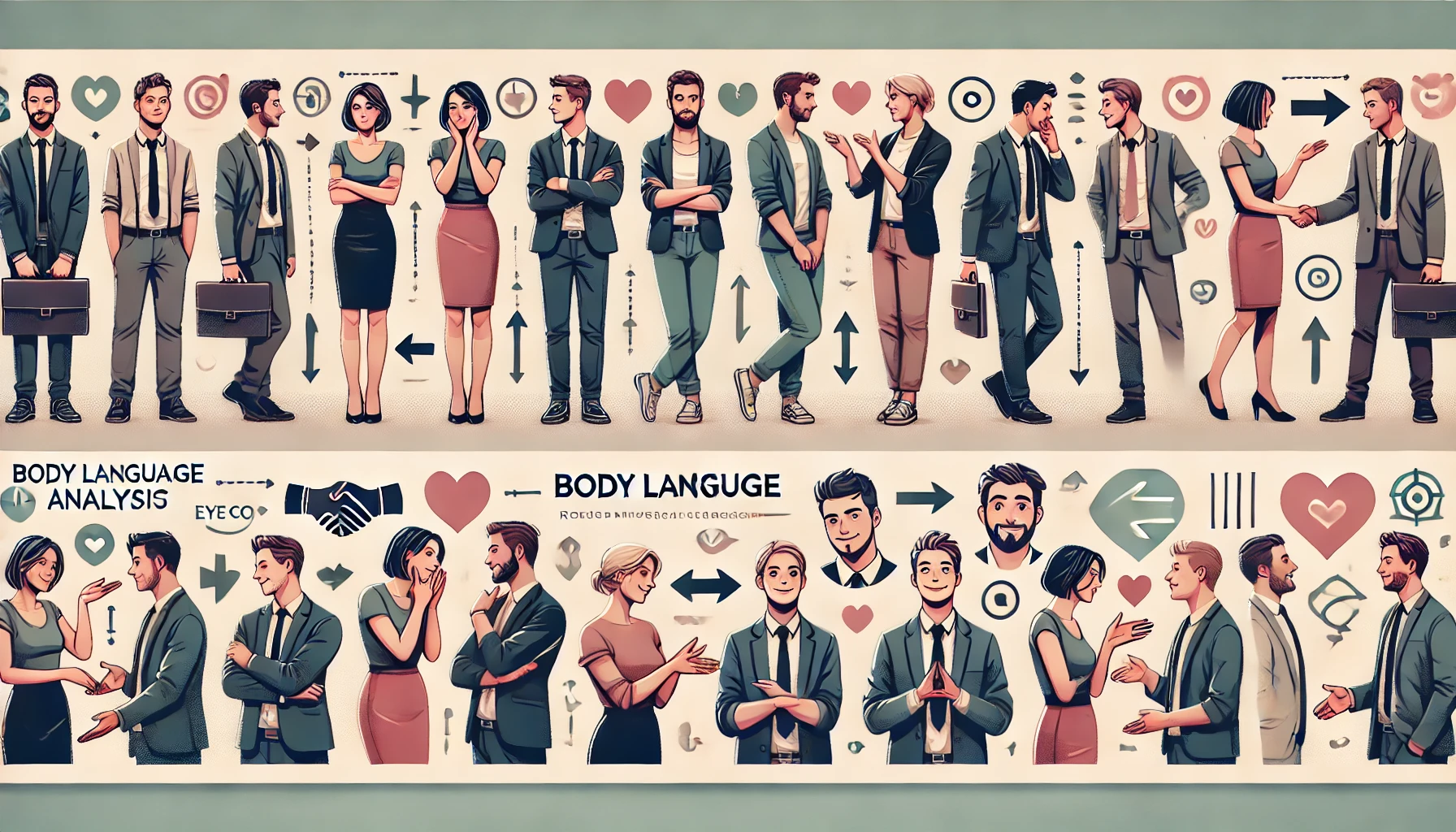How to Read Body Language: Mastering the Art of Non-Verbal Communication
Understanding body language is an essential skill for improving both personal and professional relationships. It allows you to grasp what people are really thinking and feeling without them uttering a single word. Whether you’re trying to interpret someone’s emotions during a conversation or gain insights into attraction cues, knowing how to read body language is key.
In this comprehensive guide, we will break down how to read body language, from understanding facial expressions to decoding attraction signs and interpreting gestures. By the end of this post, you’ll be equipped with practical body language tips and techniques to help you communicate more effectively.
What Is Body Language?
Body language refers to the non-verbal signals people use to communicate. This includes gestures, facial expressions, posture, and eye contact. It can reveal emotions, intentions, and even subconscious thoughts. In fact, studies show that body language accounts for over 50% of communication in face-to-face interactions.
By learning how to interpret body language, you can gain a deeper understanding of people, making your interactions more meaningful and productive.
How to Read Body Language: Key Steps
Reading body language involves paying attention to both verbal and non-verbal cues. But how exactly can you start? Let’s dive into some essential techniques for reading body language and signs.
1. Observe Facial Expressions
Facial expressions are one of the most telling signs of a person’s emotional state. A smile can indicate friendliness, while a furrowed brow might indicate confusion or concern. Learning how to interpret facial expressions is crucial for understanding body language.
Some common facial expressions to look out for:
- Smile: A genuine smile, where the corners of the eyes crinkle, often signals happiness.
- Raised eyebrows: This can indicate surprise or curiosity.
- Furrowed brows: Typically associated with confusion or anger.
By observing facial expressions, you can gain immediate insight into how someone is feeling, helping you adjust your approach during conversations.
2. Pay Attention to Body Language Gestures
Body language gestures can range from subtle movements to more obvious signals. Understanding these gestures can help you decode someone’s true emotions.
Some gestures to observe include:
- Crossed arms: Often interpreted as a defensive or closed-off posture, but it can also mean a person is cold or uncomfortable.
- Hand movements: Open, relaxed hands usually signal openness, while clenched fists may indicate stress or frustration.
- Mirroring: When someone mirrors your movements, it usually signals that they feel comfortable and connected with you.
These body language gestures provide insight into how a person is reacting during a conversation. By observing them, you can better navigate social situations and build stronger connections.
3. Understanding the Signs of Attraction in Body Language
Reading body language for attraction can be tricky, but there are clear signs that someone may be interested in you romantically. Knowing these signs can help you better understand others’ intentions.
Key body language signs of attraction:
- Leaning in: When someone leans toward you during a conversation, they are likely interested in what you are saying.
- Touch: A casual touch on the arm or shoulder can indicate attraction.
- Dilated pupils: When someone is attracted to you, their pupils may dilate, even if they try to hide it.
These subtle cues can help you decipher whether someone is romantically interested in you, which can guide how you engage with them.
4. Body Language in Conversation: Reading Non-Verbal Cues
When having a conversation, body language can often communicate more than words. Observing posture, hand gestures, and even breathing patterns can reveal a lot about how the other person feels.
Here’s what to look out for:
- Posture: An open posture with relaxed shoulders indicates comfort and attentiveness, while slouching may indicate disinterest or discomfort.
- Eye contact: Too little eye contact can suggest disinterest or discomfort, while prolonged eye contact can indicate confidence or attraction.
- Fidgeting: Fidgeting with hands or tapping feet can be signs of nervousness or impatience.
By understanding these non-verbal cues, you can better interpret how the other person feels, ensuring you respond appropriately.
Effective Techniques for Decoding Body Language
Once you’re familiar with the basics of body language, it’s time to learn how to decode more complex signals. Here are a few advanced techniques to help you analyze body language more accurately.
1. Context is Key
When reading body language, context matters. For example, crossed arms during a heated argument could mean defensiveness, but crossed arms while watching a movie might just be a sign of relaxation. Always consider the situation before making conclusions about body language.
2. Combine Multiple Cues
A single body language gesture can mean different things depending on the context. For instance, a smile may indicate happiness, but if the person is also avoiding eye contact, it could suggest they are being polite rather than genuinely happy. Combining multiple cues (e.g., facial expressions, gestures, posture) will provide a more accurate reading.
3. Be Aware of Cultural Differences
Body language can vary significantly across cultures. In some cultures, direct eye contact is seen as a sign of respect, while in others, it can be considered rude. Understanding cultural differences in body language is essential when interacting with people from different backgrounds.
Why Learning to Read Body Language is Important
Now that you have a clearer understanding of how to read body language, let’s explore why this skill is so crucial. Whether you’re engaging in personal relationships, professional networking, or sales, knowing how to interpret body language can enhance your communication skills and improve your overall effectiveness.
Key benefits of reading body language:
- Improved Communication: Understanding non-verbal signals helps you respond more appropriately during interactions, leading to smoother conversations.
- Better Relationships: Reading body language allows you to understand others’ emotions, fostering deeper and more empathetic connections.
- Enhanced Persuasion: In sales and negotiations, body language reading techniques can help you gauge your counterpart’s true feelings, giving you a competitive edge.
Mastering Body Language Decoding
Mastering the art of body language reading can significantly improve your communication and interpersonal skills. By understanding how to interpret facial expressions, gestures, and signs of attraction, you can navigate conversations more confidently. Additionally, by utilizing decoding techniques and considering cultural differences, you’ll enhance your ability to read body language accurately in any situation.
Start practicing these body language tips today, and you’ll notice the positive impact it has on your relationships and communication. For more on building effective communication skills, check out Regent Studies for additional resources and articles.




